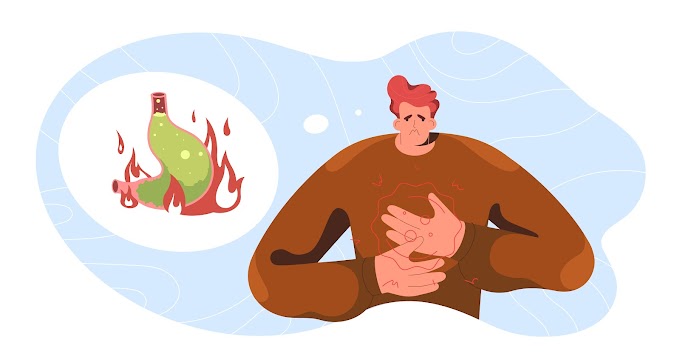Ayurvedic Insights: Nurturing Prostate Health Naturally
----
PHOTOGRAPHY BY MACROVECTOR
1. Introduction:
In the realm of holistic wellness, Ayurveda, the ancient Indian system of medicine, offers profound insights into maintaining overall health and preventing ailments. One common concern among men, especially as they age, is the enlargement of the prostate gland. Ayurveda, with its emphasis on balance and harmony, provides a comprehensive approach to address this issue. Let's delve into Ayurvedic principles and practices that can help nurture prostate health naturally.
2. Understanding the Prostate:
The prostate gland, a walnut-sized organ located just below the bladder, plays a crucial role in male reproductive health. With age, many men experience an enlargement of the prostate which is normal but in some cases, if the enlargement of the prostate is on the inner side then it starts creating problems, a condition known as benign prostatic hyperplasia (BPH). This enlargement can lead to symptoms such as frequent urination, difficulty in starting or stopping urination, dribbling urination, weak stream and a sense of incomplete emptying of the bladder.
3. Ayurvedic Perspective on Prostate Health:
Ayurveda views the body as a dynamic interplay of three doshas - Vata, Pitta, and Kapha. The imbalance of these doshas is considered a root cause of various health issues, including prostate enlargement. According to Ayurveda, an imbalance in Vata and Kapha doshas is often associated with BPH.
4. Ayurvedic Practices for Prostate Health:
4.1 Dietary Recommendations:
Emphasize a diet rich in warm, cooked, and easily digestible foods.
Vegetables:
· Add a variety of vegetables to your diet. Pumpkin, gourd, and bitter greens like kale and spinach are considered beneficial for prostate health in Ayurveda.
· Drink Lauki juice (Bottel Gourd Juice) with black pepper (kali mirch) and tulsi added in the morning for at least 3 weeks.
Fruits:
· Choose fruits that are easy to digest, such as ripe bananas, pomegranates, apples, grapes, sweet lime, mango, pears etc. Limit or avoid citrus fruits, as they are considered to be potentially aggravating for some individuals.
Spices:
· Incorporate warming spices like turmeric, cumin, coriander, and ginger into your meals. Turmeric is known for its anti-inflammatory properties.
Healthy Fats:
· Include sources of healthy fats in your diet, such as cow ghee (clarified butter), olive oil, and coconut oil. Ghee, in moderation, is often considered beneficial in Ayurveda.
4.2 Herbal Support:
1. Triphala, a combination of three fruits, is renowned for its cleansing properties.
2. Gokshura (Tribulus terrestris) is known to support urinary function.
3. Vridhivati: Vridhivati typically contains a combination of herbs such as Shilajit, Guggulu, Varuna, Amalaki, Haritaki, Bibhitaki, and other Ayurvedic ingredients. The synergistic action of these herbs helps to support prostate health and maintain the balance of the doshas.
4. Chandraprabha Vati: This Ayurvedic formulation contains various herbs like Guggulu, Shilajit, and others. It is traditionally used to support urinary and reproductive health.
NOTE: Before starting any Ayurvedic supplement, including the above-mentioned herbs it's crucial to consult with a qualified Ayurvedic practitioner. They can assess your individual constitution (Prakriti), current health condition, and any potential imbalances of the doshas before recommending specific formulations or herbs. Ayurveda emphasizes a personalized approach to health, and what works for one person may not be suitable for another.
4.3 Lifestyle Practices:
· Hot and Cold Contrast Bath: The alternating use of hot and cold baths helps to promote improved blood circulation, alleviate inflammation, and contribute to prostate health by providing a therapeutic and invigorating effect on the pelvic region. Here we will discuss the procedure with the bathtub which is preferred but if you don’t have access to it you can perform it in the shower just allow the water to flow through the hips and lower abdomen.
Step 1: Prepare the Bath
Fill the bathtub or basin with comfortably warm water. Ensure that the water level is sufficient to cover the hips and lower abdomen. Optionally, prepare a bowl of cold water or add ice cubes for the cold phase.
Step 2: Sit in Ashwini Mudra
Find a comfortable sitting position in the bathtub, ensuring that your hips and lower abdomen are submerged in the warm water. Begin by sitting in Ashwini Mudra: close your eyes, take a few deep breaths, and gently contract and release the anal sphincter muscles (as in the Ashwini Mudra).
Step 3: Immerse in Warm Water
Relax and soak in the warm water for about 5-10 minutes. Focus on maintaining steady breathing and continue with Ashwini Mudra throughout this phase. The warmth can help relax the pelvic muscles.
Step 4: Switch to Cold Water
After the warm soak, transition to the cold water phase. Either move to another basin with cold water or introduce cold water to the existing bathtub. Sit in the cold water for about 1-2 minutes, maintaining Ashwini Mudra.
Step 5: Alternate Warm and Cold
Repeat the cycle by returning to the warm water for 5-10 minutes, followed by the cold water for 1-2 minutes. Continue this alternation for two to three cycles, always ending with warm water. After the final warm soak, conclude the bath.
Important Notes:
- Listen to your body. If you feel discomfort or if the water temperature is too extreme, adjust accordingly.
- If you have any existing health conditions, especially cardiovascular issues or sensitivity to temperature changes, consult with a healthcare professional before attempting contrast bath.
- This practice can be done a few times a week, but individual tolerance may vary.
- Contrast baths are generally considered safe, but it's essential to be cautious and aware of your body's response.
· Practice regular exercise to enhance circulation and promote overall well-being. Keep your body moving, do at least 30 minutes of aerobic exercise like swimming, cycling or walking.
· Perform kegel exercise, involving the contraction and relaxation of the pelvic floor muscles, which will be beneficial for prostate health by promoting strength and flexibility in the pelvic region.
· Maintaining a healthy weight through a balanced diet and regular exercise is crucial for supporting prostate health and reducing the risk of associated complications.
4.4 Ayurvedic Therapies:
· Abhyanga (oil massage) with warm sesame oil can be beneficial.
· Panchakarma, a set of Ayurvedic detoxification procedures, may be recommended under the guidance of a qualified Ayurvedic practitioner.
4.5 Mind-Body Connection:
Avoid stress and strain. Stress is considered a significant factor in Ayurveda. Practices like meditation and mindfulness can help manage stress and promote emotional well-being.
4.6 Hydration:
Adequate water intake is crucial for maintaining urinary function, not less not more, try to take 2-3 liters of water per day which is generally recommended. Try to avoid tea, coffee, soft drinks or any alcoholic beverages.
4.7 Yoga:
Yoga and Pranayama (breathing exercises) can help balance the doshas and reduce stress. Consider pranayama techniques that are generally considered gentler, such as
1. Anulom Vilom (alternate nostril breathing)
2. Bhramari (humming bee breath)
3. Kapalbhati: Consider doing it slowly and gently. (NOTE: If you experience any discomfort or strain during Kapalbhati, it's essential to stop immediately) Forceful contractions and excessive strain may not be suitable for everyone, so it's crucial to consult with your healthcare provider or an Ayurvedic practitioner.
5. Conclusion:
Ayurveda, with its holistic approach, offers a wealth of wisdom for promoting prostate health. By addressing the root causes through dietary adjustments, herbal supplements, lifestyle practices, and mindful living, individuals can strive to maintain balance within their bodies. It's essential to consult with a qualified Ayurvedic practitioner for personalized guidance, as each person's constitution is unique. Nurturing prostate health through Ayurveda is not just a treatment; it's a journey towards overall well-being.








